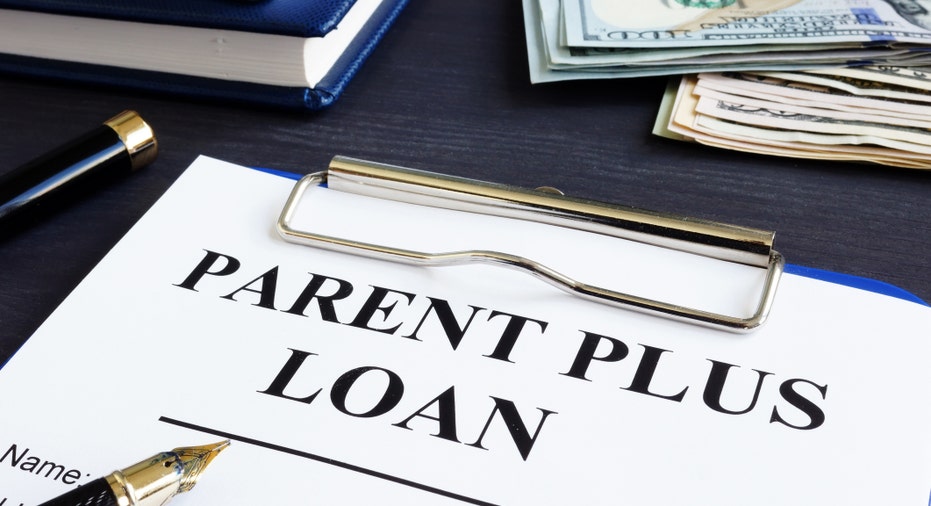5 ways to pay off Parent PLUS Loans fast

Parent PLUS loans can be a burden but you can pay them off quickly by refinancing, making extra payments or taking advantage of loan forgiveness. (iStock)
Student loan debts are a financial burden to more than just recent grads. Around 6 percent of total outstanding student loan debt is currently owed by parents facing a collective debt burden of around $87 billion, according to Brookings Institute. And this is just for Parent PLUS loans, not including loans that have been consolidated.
Parent PLUS Loans are federal student loans made to parents to help their kids pay for school and, like other federal loans, they have a fixed interest rate – albeit at a higher annual percentage rate than Direct Subsidized and Unsubsidized Loans. In fact, for the 2019-2020 school year, the PLUS Loan rate was 7.08 percent.
If you want to keep interest costs down or become debt-free as soon as possible, you may want to repay your PLUS Loans fast. If that's your goal, these five tips for debt relief can help.
1. Choose the right repayment plan
Parents have multiple repayment plan options, including a standard plan that will result in loans being repaid over 10 years or an extended repayment plan that stretches repayment out over as long as 25 years. With an extended plan, monthly payments are smaller but it takes you far longer to be free of debt -- and you pay much higher total interest costs.
2. Consider refinancing
Private refinance loans can sometimes offer a lower interest rate than PLUS Loans, especially if you have good credit and sufficient income to repay what you've borrowed. This process means finding a private lender and taking out a loan to repay existing debts. Most often, these refinance loans come from online lenders, credit unions or banks.
PARENT PLUS LOANS: WHO QUALIFIES AND HOW TO REFINANCE THEM
Refinancing means giving up options for income-driven repayment or loan forgiveness as well as giving up other federal loan benefits such as generous forbearance policies. But if you won't take advantage of these benefits anyway, refinancing can make a lot of sense.
If you can reduce your interest rate when you refinance your loan, repayment will cost less because a smaller portion of your monthly payment goes to interest. If your interest rate and payment decline after refinancing but you keep making the same size payment, you'll get your principal balance paid down quickly.
You also have the option to refinance to a new loan with a shorter repayment term. Often, you'll get the most competitive rate by choosing a short-term loan. And while your monthly payments will be bigger, you'll be able to pay off your debt much faster.
For example, if you have a $10,000 PLUS Loan at 7.08 percent and have eight years left on repayment, refinancing to a new loan at 4.99 percent interest with a five-year repayment term would raise your monthly payment by about $52 a month but you'd be free of your debt three years sooner and would save over $1,800 in interest.
3. Make extra monthly payments
Even a small extra payment can make a big difference in how long it takes to pay off what you owe. If you have a $10,000 loan at 7.08 percent and you pay an extra $100 a month starting from your second payment, you could repay your debt 5.4 years sooner and save over $2,236 in interest costs.
IS IT SMART TO MAKE INTEREST-ONLY PAYMENTS ON STUDENT LOANS?
4. Skip the deferment period
Parents can defer repayment on PLUS Loans while children are in school and during a six-month post-graduation deferment. But interest doesn't stop accruing while loans are deferred.
In fact, if you've borrowed $10,000 at 7.08 percent and you defer repayment for 12 months, you'll accrue $708 in unpaid interest that gets added to your loan balance.
You'll end up paying interest on this added interest so repayment will be costlier. Since your monthly payments will be higher due to your larger balance, making extra payments will be more difficult.
WHO'S RESPONSIBLE FOR STUDENT LOANS IN DIVORCE?
5. Take advantage of Public Service Loan Forgiveness
PLUS Loans are a type of federal student aid, so parents get many of the same borrower protections as student borrowers. However, parents don't have access to income-driven repayment or Public Service Loan Forgiveness without first consolidating using a Direct Consolidation Loan.
Consolidation is free and you can consolidate even a single loan via a quick online application. Once you've consolidated, you can repay your debt using Income Contingent Repayment and you can become eligible for loan forgiveness for qualifying public service work after making 120 payments while working for the government or for an eligible non-profit.